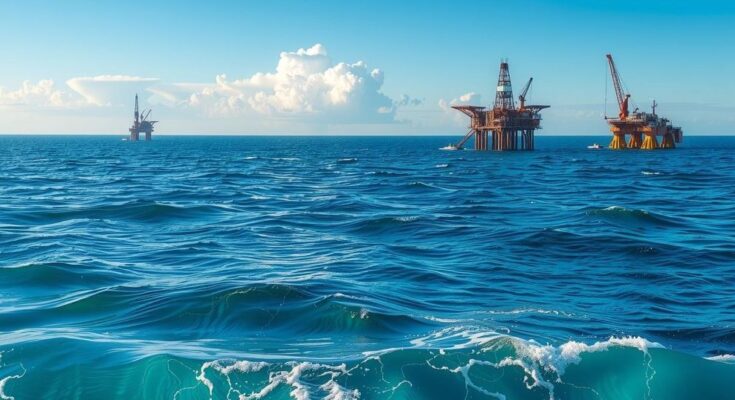Pancontinental Orange is seeking a new partner for exploration drilling in PEL 87 offshore Namibia, following Woodside’s withdrawal. Significant geological findings have identified the Oryx and Hyrax prospects as prime targets. The company underscores the strategic nature of PEL 87, which is adjacent to major hydrocarbon discoveries and highlights the potential through its comprehensive seismic data.
Pancontinental Orange, a subsidiary of Pancontinental Energy, is actively seeking a new partner to finance exploration drilling in petroleum exploration license (PEL) 87, situated in the Orange Basin offshore Namibia. This search comes after Woodside, an Australian company, decided against pursuing an interest in the license. Pancontinental has made significant progress in analyzing the intra-Saturn exploration inventory within PEL 87, identifying six new leads, including Oryx and Hyrax, which have been updated from leads to prospects.
The Oryx prospect is notable for being the largest sand body, covering an area of 144 square kilometers out of a total of more than 500 kilometers. The firm asserts this area demonstrates significant potential due to its clear Type II AVO amplitude anomaly. Iain Smith, CEO of Pancontinental, expressed optimism about the prospective resources for PEL 87, pointing out that estimates are competitive with substantial Southern discoveries.
The geological characteristics noted indicate that the turbidite sands are influenced by strong blue water currents, leading to substantial reservoir formation potential with high-quality sand deposits. The Hyrax prospect, located more southerly, shows Type II AVO amplitude anomalies over 400 square kilometers, with a slightly younger reservoir target than Oryx.
Barry Rushworth, a director at Pancontinental, emphasized the appeal of the Saturn complex, particularly as discoveries continue to be made in adjacent areas. The PEL 87 joint venture is notably positioned within the Namibian Orange Basin and boasts a valuable 3D seismic dataset. This license is adjacent to the huge Mopane discovery, estimated to contain about 10 billion barrels of oil-in-place and is not held by a major oil and gas firm.
Additionally, the Oryx North and Calypso leads encompass mapped AVO amplitude anomalies of 161 and 74 square kilometers, respectively. Evidence across the area indicates a significant redistribution of sand due to water flow patterns, which enhances the exploration potential of the site. Another significant prospect, the Xerux, spans 250 square kilometers and features various AVO anomalies linked to slope turbidites influenced by deep-water currents.
The Addax Channel and Fan leads, displaying AVO anomalies of 85 to 330 square kilometers, indicate advanced clastic reservoir deposition processes. PEL 87 covers an area of 10,970 square kilometers and is situated along a trend where numerous critical hydrocarbon discoveries have been recorded recently.
The current exploration phase requires either the drilling of one exploration well or the acquisition of significant seismic data if no drillable prospects are identified, aiming to enhance the geological understanding and attractiveness of the site. Pancontinental holds a 75% interest in the permit, with partners Custos Investments and the National Petroleum Corporation of Namibia (NAMCOR) holding 15% and 10%, respectively.
Following Woodside’s announcement not to pursue the PEL 87 option, discussions are underway to secure alternative farm-in partners swiftly. Robert Bose, CEO of Sintana, remarked on the advantages of the comprehensive seismic dataset acquired with Woodside’s funding, enhancing the PEL 87 partners’ position for expedited discussions about potential collaborations. Smith reiterated the company’s strategic focus on finding new partners to facilitate exploration drilling in light of Woodside’s withdrawal.
In summary, Pancontinental Orange is seeking a new partner to fund exploration in license PEL 87 after Woodside declined involvement. The company has made significant geological strides in identifying key prospects, particularly Oryx and Hyrax, highlighting substantial potential for hydrocarbon resources. The strategic positioning of PEL 87 adjacent to major discoveries like Mopane enhances its attractiveness, and the firm aims to accelerate discussions for alternative partnerships to continue advancing exploration initiatives.
Original Source: www.offshore-energy.biz




